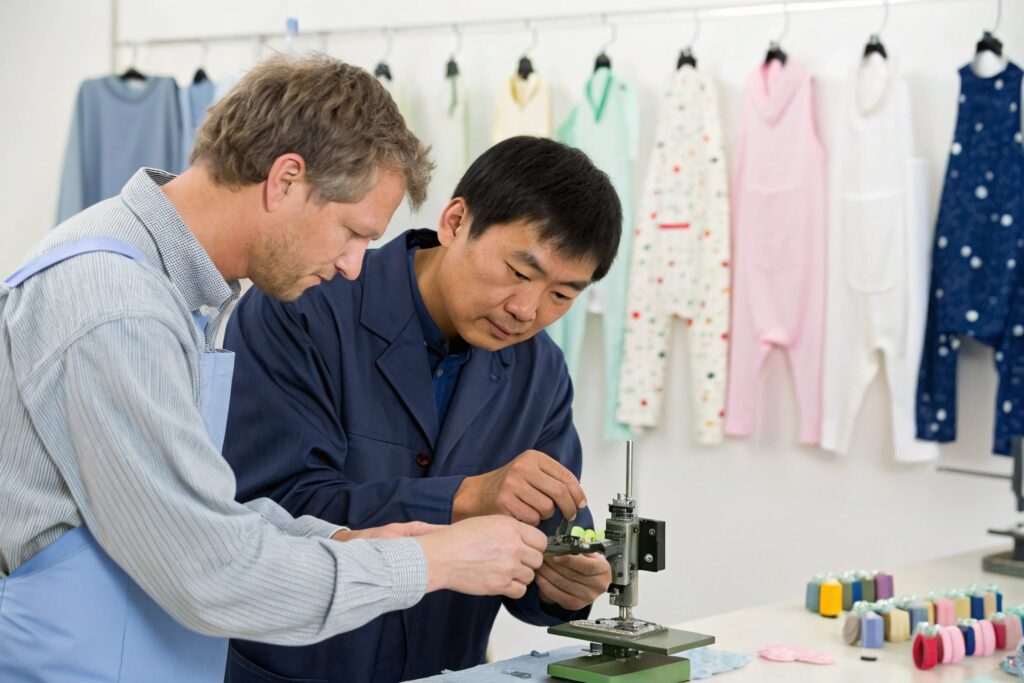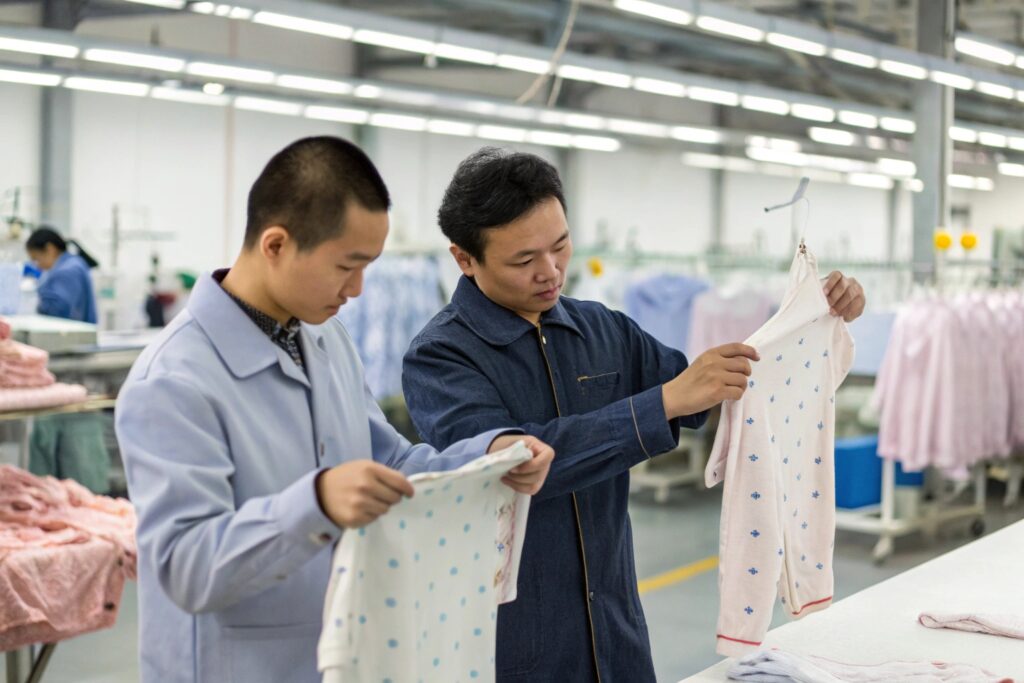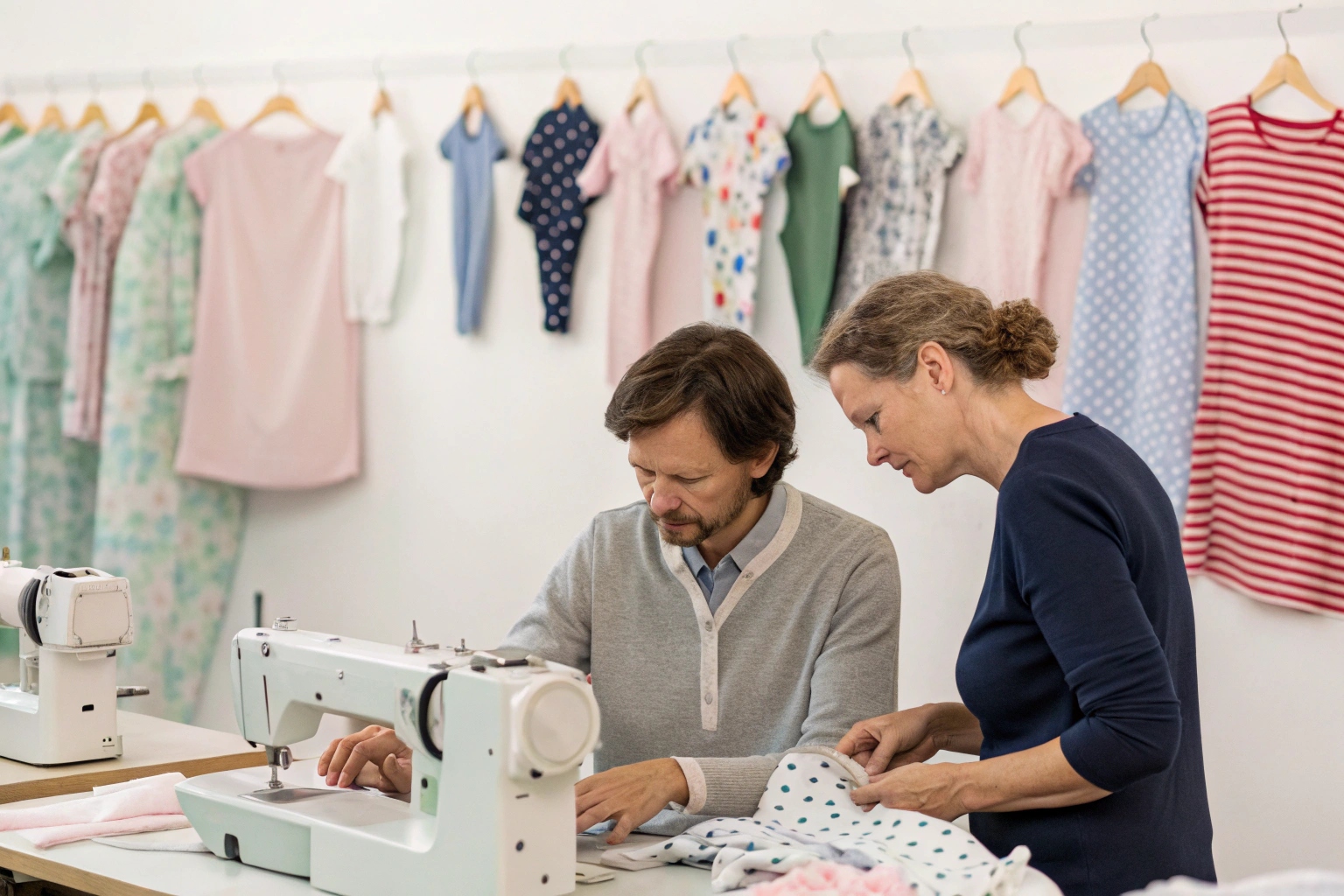Want full control over your kidswear line? Starting a cut and sew operation gives you the freedom to design, sample, and produce clothing from scratch—right under your supervision.
To start a cut and sew kidswear business, you need the right machines, skilled workers, reliable fabric sources, and a production system tailored to small garments.
Here’s a step-by-step guide to launching your own in-house kidswear production—from setup to sales.
What Equipment You Need to Start a Cut and Sew Operation?
Starting cut and sew means producing garments from raw materials, not pre-made blanks. So you need machines that can handle every stage—from cutting to finishing.
You’ll need industrial-grade machines like straight stitch, overlock, and button/snap setters—plus cutting and pressing tools—to produce kidswear safely and efficiently.

What equipment is essential for kidswear?
| Machine/Tool | Function |
|---|---|
| Straight stitch machine | Main construction seams |
| Overlock (serger) | Edge finishing for knits and wovens |
| Flatlock or coverstitch | Smooth hem finishing for stretch fabrics |
| Snap/button press | Applies closures, especially for babywear |
| Steam iron + pressing table | Wrinkle-free finishing |
| Cutting table & scissors | Manual or semi-auto fabric cutting |
| Measuring and grading tools | Size consistency for baby/toddler fits |
Start small: A basic 2–3 person setup can run efficiently with 5–7 machines and a cutting station.
Optional but helpful equipment:
- Embroidery machine (for monograms or logos)
- Digital scale (for fabric consumption tracking)
- Fabric inspection light table (for quality control)
- Label printer (for branding and sizing)
At Fumao, we use specialized babywear equipment like soft-seam overlockers to protect newborn skin—something you can add as your operation grows.
How to Source Patterns, Fabrics, and Skilled Labor?
You can’t cut what you don’t have. And you can’t sew it right without the right hands. Your materials and your team define the success of your cut and sew setup.
Start by buying or drafting reliable patterns, sourcing safe and soft fabrics, and hiring tailors or sewers with experience in small-format garment construction.

Where to get patterns for kidswear?
| Option | Pros |
|---|---|
| Buy from pattern libraries | Fast start, cost-effective |
| Hire a patternmaker | Custom sizing, exact brand fit |
| Use CAD software (e.g., Gerber, CLO3D) | Easy to modify, scale, and simulate |
Look for patterns in sizes ranging from NB–6Y and always test the fit through samples before bulk production.
Where to find fabric and trims?
- Local textile markets (faster sampling, lower MOQs)
- Certified suppliers (for OEKO-TEX® or GOTS organic cotton)
- Online B2B platforms (Alibaba, Fabric.com, IndiaMART)
- Domestic wholesalers (more reliable delivery timelines)
Choose fabrics that are:
- Breathable (cotton, muslin, bamboo)
- Soft and stretchable (rib knit, jersey)
- Compliant with CPSIA or OEKO-TEX®
How to hire and train labor?
- Look for tailors or sewers with babywear or lingerie experience
- Train them on flat seams, pressure-reducing stitches, and fastener safety
- Provide clear tech packs or visual instructions
- Create sample-first workflows before bulk runs
At Fumao, we onboard workers through test runs and buddy systems—making sure even the newest seamstress meets babywear quality.
Steps to Set Up a Kidswear Production Workflow?
Once your machines and team are ready, you need a workflow that minimizes mistakes and maximizes consistency—especially for tiny garments.
Set up a kidswear production workflow that starts with fabric inspection, moves through cutting, sewing, QC, and ends with packing.

What does a typical cut and sew workflow look like?
| Step | Description |
|---|---|
| 1. Fabric inspection | Check for flaws, stretch, color issues |
| 2. Pattern cutting | Cut using patterns, graded by size |
| 3. Sewing/Assembly | Begin with body panel construction |
| 4. Closure and finishing | Add snaps, buttons, hems, and trims |
| 5. Quality control (QC) | Check seams, size specs, thread ends |
| 6. Pressing and folding | Final finish, remove wrinkles |
| 7. Packing | Insert size/care tags, seal packaging |
Each stage should have checkpoints to reduce rework. Use a production board to track units by style, size, and status daily.
What tools make production smoother?
- Tech packs for each style
- Daily output targets per team member
- Barcode system for style/color tracking
- Sample approval log to match expectations
- Checklists at QC for seam, size, and closure checks
Small brands can also document workflow in Google Sheets or Notion to keep things organized without investing in full ERP systems.
How to Price and Sell Your Cut and Sew Kids’ Collection?
After making your clothes, the next step is getting them into shopping carts—with a price that covers your costs and supports your brand.
Price your kidswear by calculating fabric, labor, overhead, and profit margins—and sell through your own website, marketplaces, or wholesale partners.

How to calculate your product pricing?
| Cost Type | Example Amount (USD) |
|---|---|
| Fabric + trims | $2.50 |
| Labor | $1.80 |
| Overhead (rent, power) | $0.50 |
| Packaging | $0.30 |
| Total Cost | $5.10 |
| Target Retail (x2.5–3.5) | $13–$18 |
This gives you enough margin to cover returns, marketing, and growth. Adjust markup based on niche—eco and handmade items allow for higher pricing.
Where to sell your cut and sew kidswear?
- Your website (Shopify, WooCommerce) – Full control, best margin
- Etsy – For handmade/custom markets
- Faire or Abound – Wholesale to baby boutiques
- Instagram or TikTok Shop – Social commerce with influencers
- Local pop-ups or baby expos – Great for feedback and quick sales
Bundle SKUs into sets (e.g., onesie + bib) to increase average order value. Offer limited editions to create urgency and collect early customer data.
Conclusion
Starting a cut and sew kidswear business is a big step—but with the right tools, team, and workflow, you can bring your vision to life. Whether you're building your own brand or producing for others, quality, safety, and storytelling are what set you apart.










